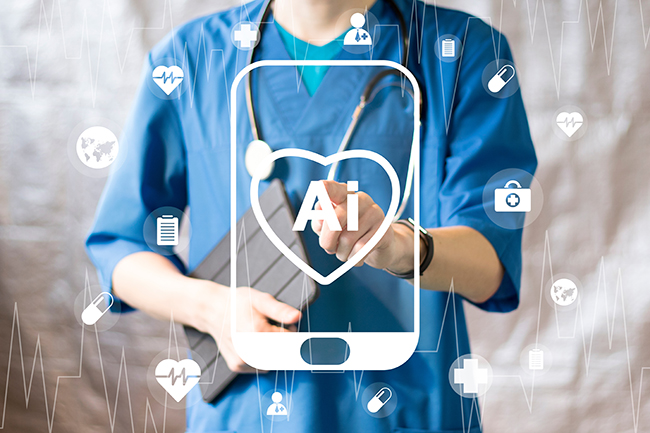Since our last blog on this new subject on AI, I must admit to being stunned by the accelerating number of discussions on AI just in a few days. I am receiving many emails daily from organizations, institutions, law firms, as well as healthcare specific media, and financial consultants on new ‘applications’ of AI in every industry, including healthcare. Unfortunately, most are not altogether well thought out, and are clearly ‘one shot wonders’ aimed at garnering attention; however, they’re not contributing substantially to the subject. Many are ‘piggy-backing’ on ChatGPT to answer ad hoc questions which is self-limiting in usefulness and useful life.
We have been talking about our own healthcare application of AI, and it sometimes seems like there is an echo in the room.
If you think I am kidding just look at some of the stuff I am getting:
Building Biotech with Brains: Strategies for Maximizing Value of AI-Driven Biotechnology Inventions: https://www.foley.com/en/insights/publications/2023/03/building-biotech-brains-ai-driven-inventions
Bill Gates says OpenAI’s GPT is the most important advance in technology since 1980: https://www.cnbc.com/2023/03/21/bill-gates-openai-gpt-most-important-advance-in-technology-since-1980.html
Almost Half of Health Systems Use AI for Workforce Issues: https://healthitanalytics.com/news/almost-half-of-health-systems-use-ai-for-workforce-issues
It seems that so many out there are holding to the belief that AI is the next “Holy Grail” of technology and that AI will change everything in healthcare. For years, EMRs, including the one we developed and twice certified, PWeR®, has modules to assist doctors. For, instance “predictive medicine” and “decision support” that are based on Boolean ‘if, then else’ and branching diagnostic algorithms, CPT and ICD-10 codes. It is data analytics that suggests what the doctor should look at next or even go back and review. We thought it was helpful, but most doctors did not use it much. Those in specialized fields that had a deep understanding of actions and interactions of the abnormality, as related to the “normal” condition of their patients, seemed to rely on it even less. I have seen doctors make amazing decisions based on just a few data sets, but this is where experience is so valuable. AI is way different and will help with diagnostics, and so much more, but even with advanced machine learning to assist, we are a long way from pouring 40 years of human professional experience into a ‘data lake’ for the AI-engine to draw from.
For example, we filed patents on ‘dynamic patient scheduling.’ Who has not entered a doctor’s office that was full to the point people were standing. Well, there is potentially a lot of data that could help expected-unexpected cancelations, the pattern of a particular patient, traffic conditions from the patients’ home or office, office staff levels and what the general conditions are that could provide for more emergencies, like during flu season.
We also have a patent on the integration of wearables or IoT devices automatically with patient EHR or PHR. Review and recommend actions, if all is normal it just logs the information. At one threshold the platform alerts a caregiver, and if it goes beyond to another higher threshold it alerts the doctor, and if it detects a life-threatening situation, all are notified and Emergency Services/EMT is / can be summoned via 9-1-1.
There are major issues on the functionality and integration of data between EHRs, or what is generally referred to as interoperability between EHRs. For many mature patients, their historical records are still either in hardcopy or in pdf format, but not digitized into the EHR. Doctors simply do not have the time to go back and sift through reams of hardcopy or pdf files looking for some relevant information. This is one of the reasons interoperability has not worked. The problem is that it can’t just import data and not review, it is a medical liability issue, and it is not the doctor importing the data either, it is typically the EHR vendor. However, AI is great at comparative analysis and can be easily tasked with the review and summarization of the past issues, as well as correlating of those past issues with the current patient condition. This can save a lot of lives because in this case ‘what you don’t know CAN hurt you!’
EHRs have not been as effective at saving lives as we all thought they would be 15 years ago. What we created with EHRs is just more expensive, deeper, and even more isolated data silos!
We are focusing on what is the biggest opportunity – analyzing the uncorrelated data sets that go beyond what is known to identify, for example “cancer clusters” going back to possible community exposure decades before, for exposure of a group. This also provides immediate leverage to provide public health agencies and even corporations to evaluate the real-time wellness of the population, either regionally or withing the corporation, to identify wellness trends, possible clusters of disease, or other issues that could affect performance or lead to further outbreak.
AI alone will not be the answer; however, because it needs 360 degree of personal health data analytics to allow for machine learning, predictive medicine, and deep data analytics, it will take time, and material investments. It will certainly work, but not in days, months, or even years.
In our use, AI becomes somewhat like an orchestra conductor directing these other systems and algorithms in what to analyze and what data to use. So long as AI is provided with the full universe of information, and sufficient data is available to generate inertia in the data calculations, the end result will be useful; however, as the computer proverb reads: “GARBAGE IN – GARBAGE OUT!”
-Noel J. Guillama, Chairman

